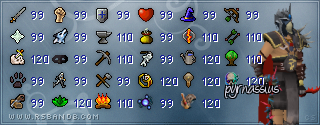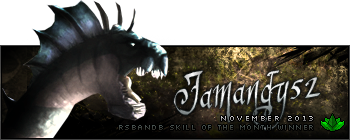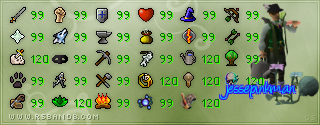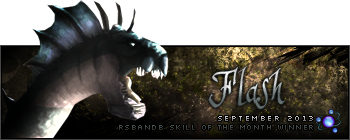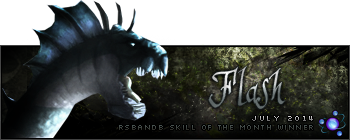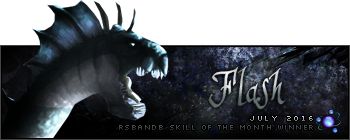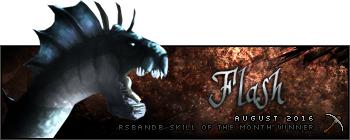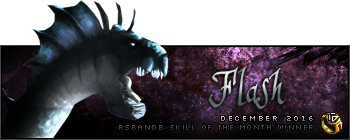Dungeoneering is one of my favorite things to do in RuneScape. To do it successfully requires strategy, teamwork, and a little bit of knowledge about the dungeons. To get the fastest rates of experience and tokens, it is obvious that faster floors are something that will help. In this article, I am going to give my top 5 tips to help you decrease your Dungeoneering floor times. Please note that most of these tips are only useful for 5 man large floors, which is the fastest way to get experience and tokens.
1. Know the chat abbreviations
When communicating with fellow players in a dungeon, talking can sometimes take up a significant amount of time. When communicating with your teammates, you have to say as little as you can to get clear information across. The below abbreviations are universally used in Dungeoneering, and can help you to keep communications fully open, while not hampering on your floor time.
Gd - Guardian door
Gt/ggs - Group tele / group gatestone
Gate/G8 = gate a door, aka drop your personal gatestone at the said location
Pgt = Personal gatestone teleport
Gtgd - Gate tele, and clear the guardian door
Hgt[boss, keycombo, room name, player] - Hold the group gatestone until your path comes to a dead end, or you are told to move it to your personal gatestone
Mgt - Move the group gatestone, pick up the group gatestone, then teleport to your personal gatestone
Cgt - Carry the group gatestone as you explore
Dgt - Drop group gatestone
Mgtb - Move the group gatestone to the boss
Gtb - Group gatestone teleport for boss
Gte - Group teleport to end
Gdm - Guardian door marked
Gtl - Group teleport for lever room
Ht - Home teleport (Base)
Fork = A fork in the path, if you're idle and/or free gate you should gt to help explore
Sgt - Sell the group gatestone, used when a person in the team wants you to move the gatestone to somewhere useful.
Bgt - Buy the group gatestone, means to drop it.
Gk[Key] - Got key / grab key
Room name > [insert room] - This phrase is used to let others know what is after a room. Ex. Gd>Gd>denk
Fg - Free gate
Nfg - No free gate
Wyg - What's your gate?
De - Dead end
Denk - Dead end no key
Dewk - Dead end with key
Gto - Group tele and open, this response is usually said to the keyer to open a key door. Otherwise "Gto -keyname-" or "Gto -RSN-"
Key Combos
Go - Gold
Gr - Green
O - Orange
B - Blue
S - Silver
C - Crimson
Y - Yellow
P - Purple
Co - Corner
Cr - Crescent
D - Diamond
P - Pentagon
T - Triangle
R - Rectangle
S - Shield
W - Wedge
2. Do what you are told to do!
In dungeoneering, the role of one of the members of the team, usually the person who started the team, of the keyer. The keyer's job is to give commands to the team throughout the dungeon, and to conduct the movement of the group gatestone. I cannot stress enough that one of the best things you can do to have faster floors, is to listen to the keyer, and do what he or she says. Usually the keyer is somebody with more dungeoneering experience, as the role of keyer is the most difficult role in the dungeon. Since the game update to Dungeoneering that made keys no longer go to players' inventories, the role of keyer seemed to have been less of a role, but it is still good to have a person who leads the floor. All I can say about this is to listen to what that person says to do.
3. The first 30 seconds of a Dungeon.
The first 30 seconds of a dungeon are very crucial, as they can lead you to have a good start, or to fall behind. A good team has all of the doors at the base open, all members of the team have a few pieces of food, and all members have the proper runes in the first 30 seconds of a floor. The absolute first thing you should do when entering a floor is to pick up a few items from he table that you can sell for about 4k. Good items to look for are armour pieces, weapons, and arrows (which usually sell for the most if Zephyrium+). Also, be sure to pick up about 2-3 pieces of food to hold you over until you get a pile of food as a monster drop. Once you have a few items from the table, sell them to the smuggler and buy about 100 pure essence. With this pure essence, make 60 law runes, and 40 cosmic runes. This gives you the runes to cast the teleport spells and the create gatestone spell. While you are doing all of this, take a quick glimpse at the map to determine what path you should take, if there are multiple paths from the start (more about this in tip #4). After you have made your runes and have some food, open any doors at the base which are not open, and then start exploring. A good team should be able to do all of this in under 30 seconds. If that happens in a floor, you are off to a good start.
4. Movement of the group gatestone.
A team that knows how to properly move the group gatestone is one that can do very fast floors. If the group gatestone is moved properly, you should not have to walk through any rooms that you have already been through, and should be able to teleport around the dungeon to the needed locations. The keyer is usually the person in charge of the group gatestone, and will usually tell members of the team to gate certain doors with a personal gatestone. Then later in the dungeon, the keyer may tell a certain person to move the group gatestone to their personal gatestone. The reason for this is that the team can now progress through the door that the gatestone was moved to, and bringing the group gatestone to that door is how the team can get to that location to continue exploring. Another important tip is where the group gatestone goes if the path comes to a fork, where there is more than one door that branches off of a room. Let's take a look an an example of this situation.
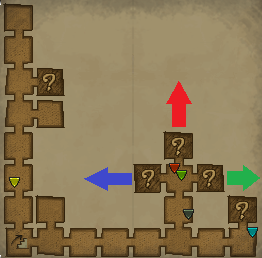
As you can see by the map above, the team has come to a fork in the dungeon. Determining who should take what path is very important. A general rule to follow when picking paths is that the person holding the group gatestone should take the path with the most empty map spaces behind it. In this example, the path denoted by the red arrow is where the person carrying the group gatestone should go, this is called the dominant path. From there, the keyer will usually assign people to the remaining paths. Lets say the players with the green and black markers are the ones who are being assigned to the other two paths, also, the green player has a personal gatestone at the unopened door in the north west corner of the map, and the player with the black marker has nothing gated. In a dungeon, no matter what you are doing, you should always have a personal gatestone either in you inventory or at an unopened door. If the other two players in the floor (yellow and blue) are busy and cannot teleport to help with the fork, the black and green players must take the two remaining paths. Another rule to follow with this, is that the person who does not have a personal gatestone in their inventory should take the path with the least empty map spaces behind it. In this case, the green player would take the green path and the black player would take the blue path. If done properly, the players who are not on the dominant path can drop their personal gatestone, and return to their path later if the player on the dominant path runs into a room that requires more players to complete. Mastering this may take some time, but this is the most valuable piece of information to help you do faster dungeoneering floors.
I hope these tips will help you to have faster dungeoneering times, and with faster dungeoneering times comes faster rates of experience and tokens. If you have any questions about any of these tips or anything else regarding dungeoneering, please leave a comment.
This was originally posted as an
Informer Runescape article.













